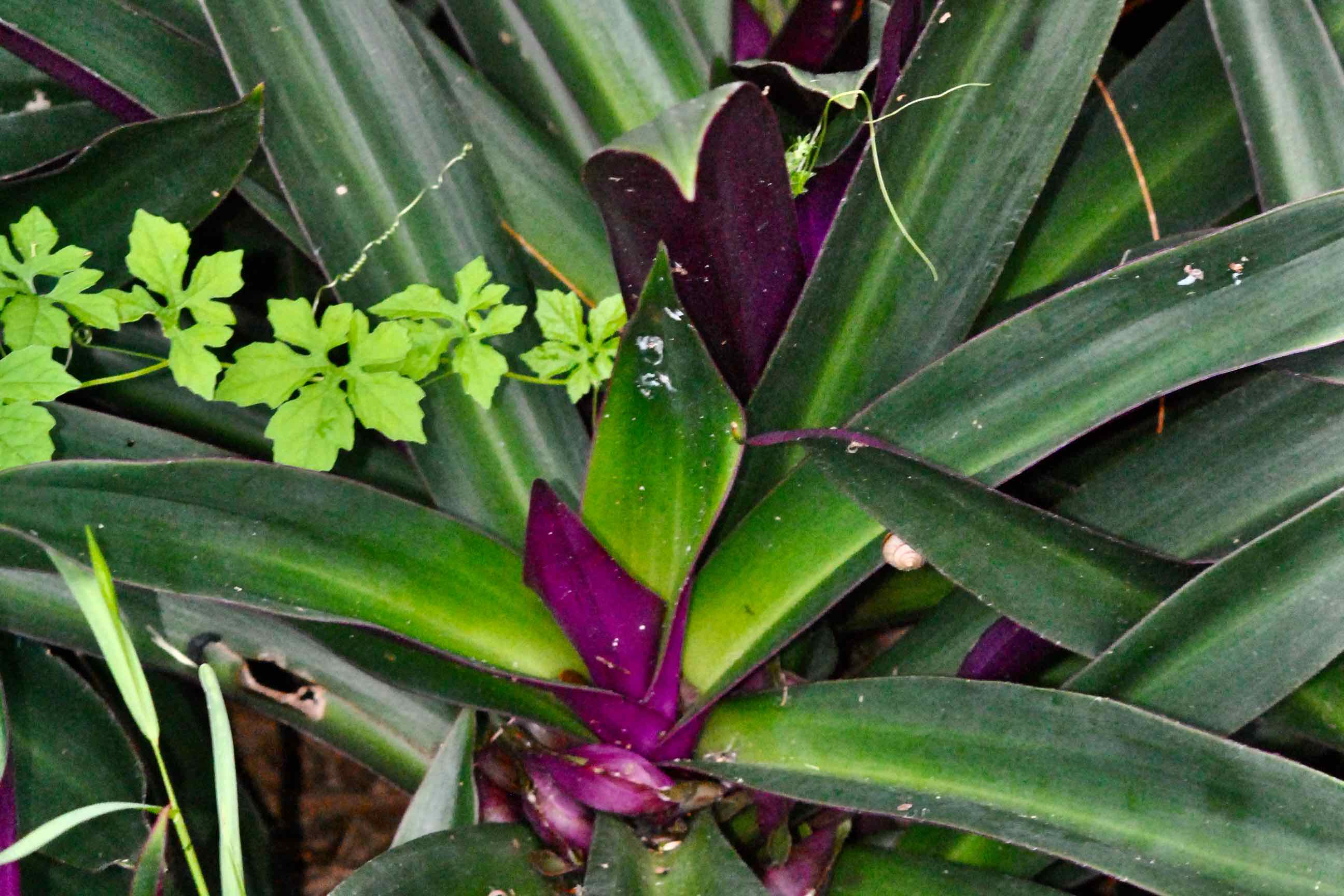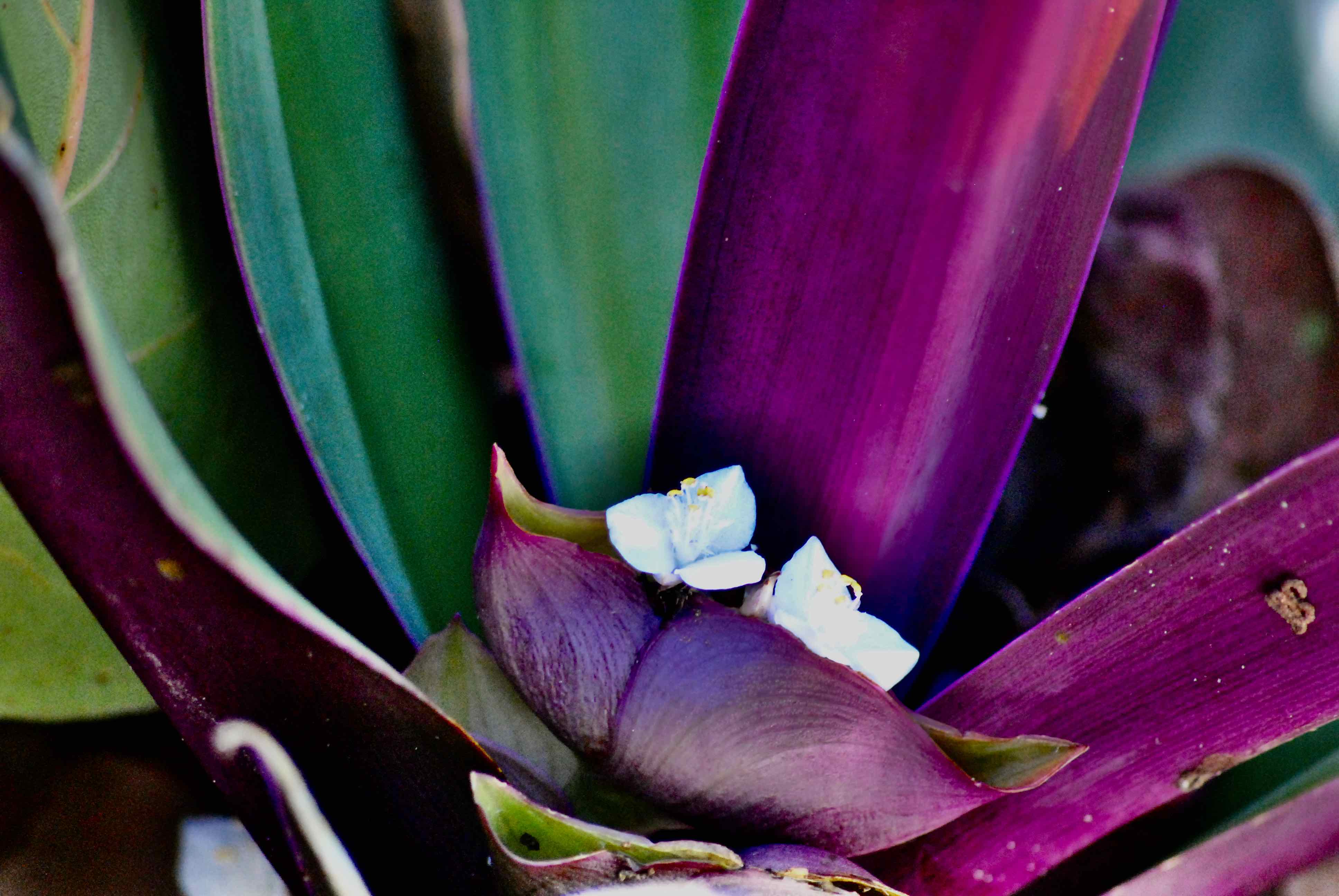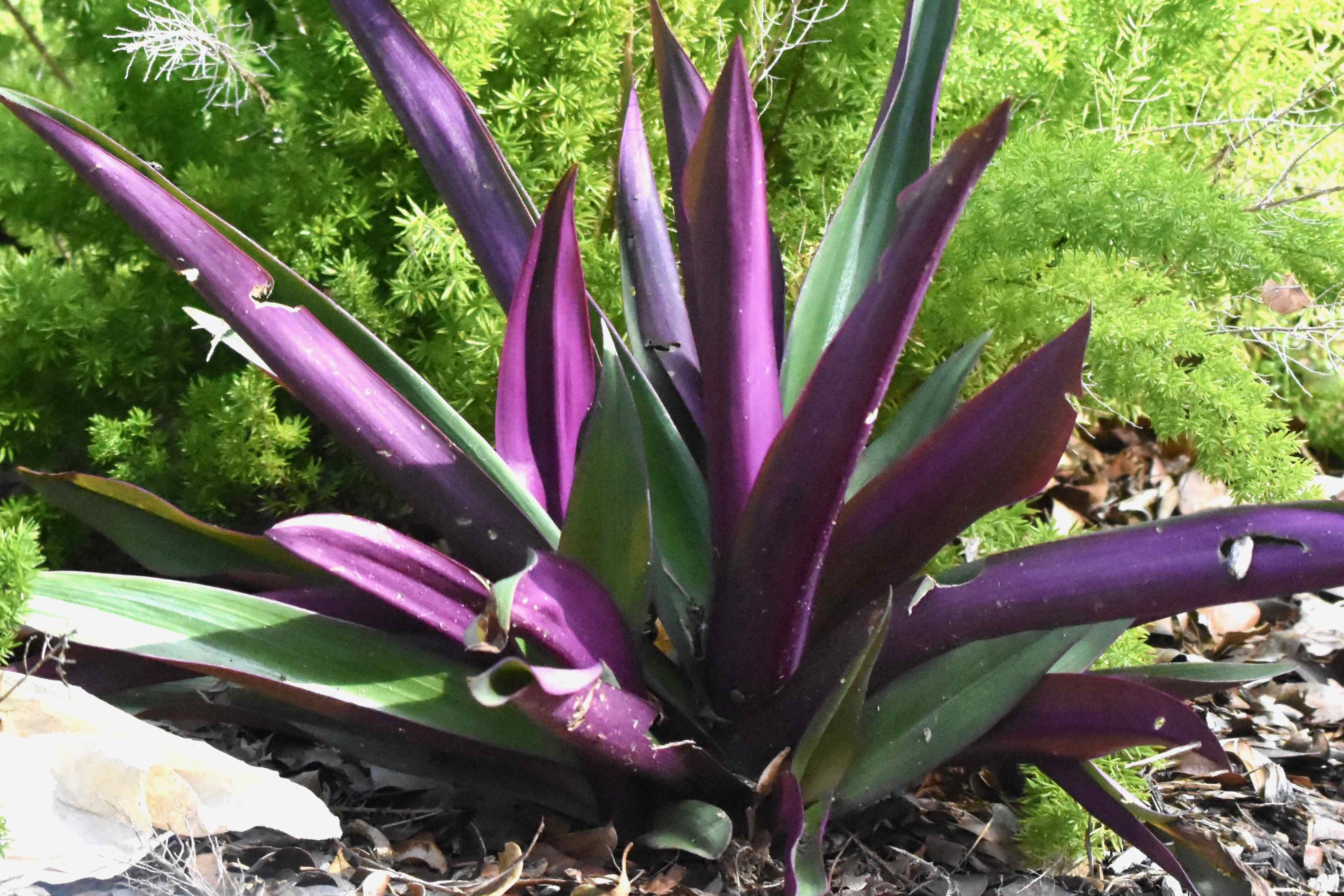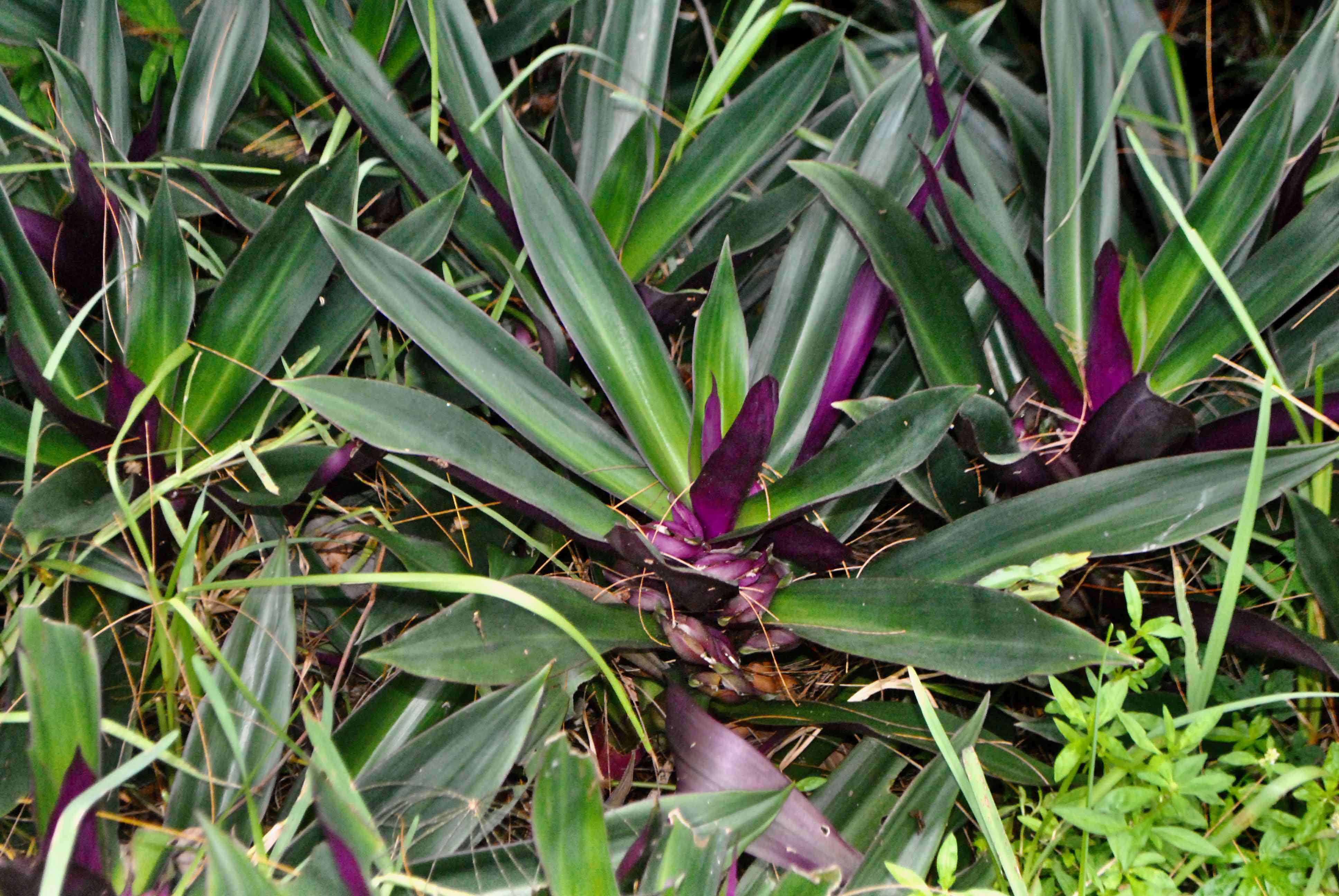
Oyster plant, photographed in northwestern Delray Beach, Palm Beach County, in September 2013.
Oyster plant, with its small white flowers and colorful leaves, looks harmless enough. Attractive even. But oyster plant grows and speads rapidly. It has escaped civilization and invaded wild areas of Florida, where it develops dense mats and blocks native plants from taking root. And that's a problem.
The plant is scientifically known as Tradescantia spathacea, named after John Tradescant Sr., gardener to Charles I of England. Oyster plant has a short stem and long, fleshy leaves that vary in color from green to purple. The flowers are small and white, with three triangular petals. The flowers appear throughout the year. Oyster plant's native range includes southern Mexico, Belize, Guatemala and parts of the Caribbean, but it's beauty has taken it to warmer places around the globe for use as an ornamental and ground cover. It's found in China, Japan, parts of Africa and the Pacific Islands.
Back here in the United States, it's found in Florida, mainly South Florida, and Louisiana. It's widely used in landscaping, but it's also become naturalized, meaning it grows wild. It is a Class II invasive in Florida — it is spreading in the wild and bears monitoring, but has yet to displace native plants. Despite its invasive status, its sale, however, is not banned and the plant is widely available in garden centers and nurseries.
Oyster plant is a shade lover, which is one reason why it is valuable in landscaping. It will grow where other cultivated plants won't. But that same characteristic is also part of the problem it poses. When it finds a home in coastal hammocks, it blocks out seedlings from native trees and plants. One of the common way it spreads is through yard waste; pieces of the plant will sprout under the right conditions. Seeds of the plant are probably wind-dispersed; established plants spread by sending out shoots.
In Australia, the Queensland government considers it an environmental pest. It is listed in the Global Invasive Species Database.
The leaves of oyster plant contain a sap that can cause a rash in some people. The plant itself is toxic if eaten, and will cause severe burning pain in the mouth and throat.
On the other hand, Oyster plant is used medicinally in parts of the world. In China, the flower is used to treat dysentery, intestinal bleeding, and certain problems of the lung and nasal passages. In the Philippines, medicines are made from the flower and leaves to treat colds, sore throats, whooping cough, nasal bleeding and dysentery. It's used externally to treat inflamation and swelling.
Oyster plant is a member of Commelinaceae, the dayflower family. Other common names: Moses-in-a-basket, Moses-in-the-cradle, Moses-in-a-boat and boatlily.
Click on photo for larger image
U.S. Department of Agriculture Distribution Maps
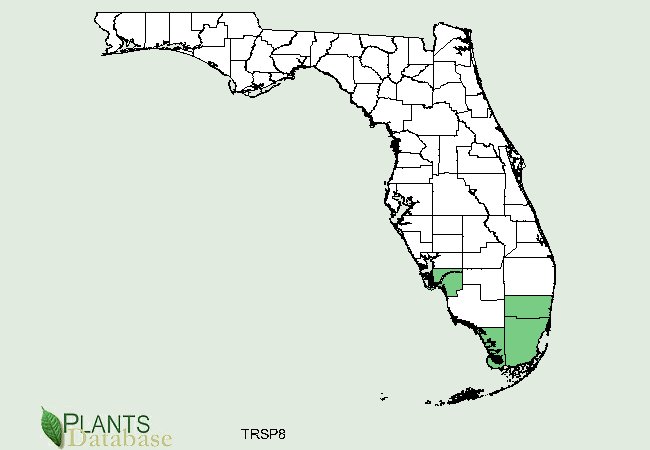

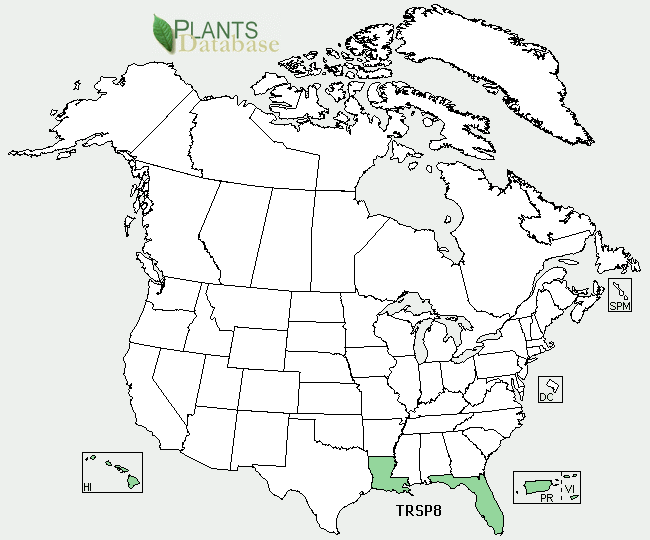
Links for Oyster Plant

